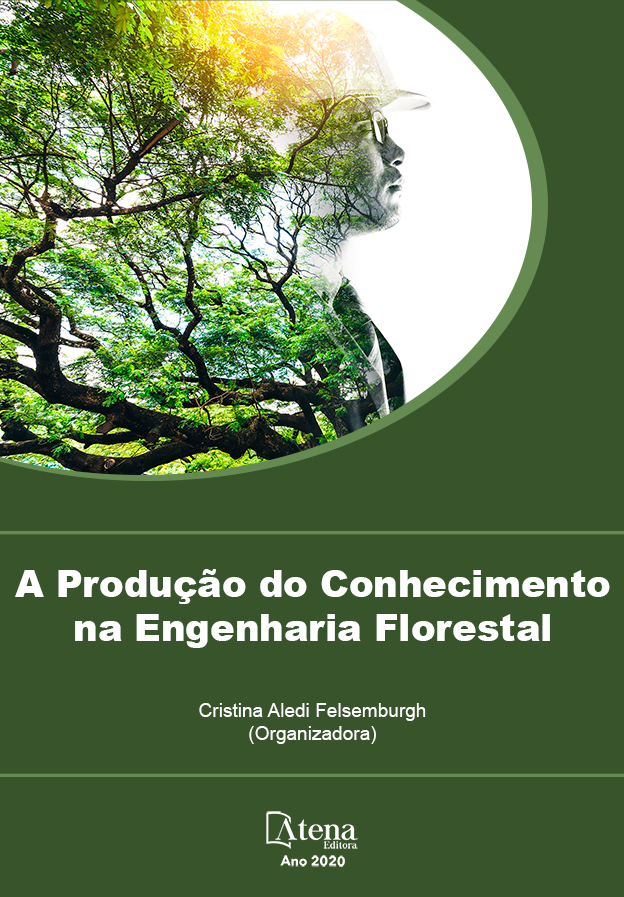
ASPECTOS DA ESTRUTURA DA VEGETAÇÃO ARBÓREA E DA REGENERAÇÃO NATURAL EM UMA ÁREA RESTAURADA HÁ 15 ANOS NA REGIÃO METROPOLITANA DE MACEIÓ, AL
O monitoramento de áreas restauradas contribui para o controle do desenvolvimento, perturbações e a consequente necessidade de interferência por meio de manejo ou replantios. O objetivo do estudo foi caracterizar a estrutura da vegetação arbórea e da regeneração natural após 15 anos da implantação florestal em uma área com histórico de degradação, situada no Arboretum de Alagoas, região metropolitana de Maceió. Uma grade amostral contendo 88 unidades amostrais permanentes, com dimensão de 20x20 metros foi tomada como base, sendo 21 dessas distribuídas aleatoriamente para caracterização do estrato arbóreo. Foram mensurados e identificados botanicamente todos os indivíduos arbóreos com dap ≥ 5 cm. Para a regeneração natural, em 12 unidades amostrais, os indivíduos com altura superior a 0,5 metros e dap < 5 cm foram incluídos em três classes de tamanho de planta. Foi quantificada a florística, fitossociologia e a diversidade das espécies, bem como os índices de regeneração natural por classe de tamanho de planta (RNC) e total (RNT), estimados por espécie. No estrato arbóreo foram encontradas 71 espécies, pertencentes a 27 famílias botânicas, similar ao componente regenerante (72 espécies e 27 famílias). Fabaceae e Bignoniaceae foram as famílias mais representativas em ambos os estratos da floresta. Constatou-se uma alta diversidade de espécies tanto para o estrato arbóreo (H’ = 3,78 nats.ind-1) como para a regeneração natural (H’ = 2,85 nats.ind-1). A estrutura diamétrica arbórea seguiu a configuração típica de florestas nativas, apesar da área ser proveniente de plantio há apenas 15 anos. A regeneração natural apresentou densidade estimada de 8.446 ind.ha-1, sendo Xylopia frutescens (12,2%), Vismia guianensis (9,8%) e Tapirira guianensis (7,3%) as espécies com maior RNT. Os resultados indicam a ocorrência de intensa dinâmica na área, onde o processo natural de sucessão está sendo garantido pelo ingresso no estrato arbóreo de indivíduos que se encontram no componente regenerante.
ASPECTOS DA ESTRUTURA DA VEGETAÇÃO ARBÓREA E DA REGENERAÇÃO NATURAL EM UMA ÁREA RESTAURADA HÁ 15 ANOS NA REGIÃO METROPOLITANA DE MACEIÓ, AL
-
DOI: 10.22533/at.ed.0062026105
-
Palavras-chave: Inventário Florestal, área degradada, mata atlântica, sucessão natural
-
Keywords: Forest inventory, degraded area, Atlantic forest, natural succession
-
Abstract:
The monitoring of restored areas contributes to the control of development, disturbances and the consequent need for interference through management or replanting. The objective of the study was to characterize the structure of tree vegetation and natural regeneration after 15 years of forest implantation in an area with a history of degradation, located in the Arboretum of Alagoas, in the metropolitan region of Maceió. A sampling grid containing 88 permanent sampling units, with a 20x20 meter dimension, was taken as a basis, 21 of which were randomly distributed to characterize tree vegetation. All arboreal individuals with dap ≥ 5 cm were measured and identified botanically. For natural regeneration, in 12 sample units, individuals with height greater than 0.5 meters and dap <5 cm were included in three classes of plant size. Floristics, phytosociology and species diversity were quantified, as well as the rates of natural regeneration by class of plant size (RNC) and total (RNT), estimated by species. 71 tree species were found in the tree vegetation, belonging to 27 botanical families, similar to the regenerating component (72 species and 27 families). Fabaceae and Bignoniaceae were the most representative families in both strata of the forest. A high diversity of species was found in tree vegetation (H'= 3.78 nats.ind-1) and in natural regeneration (H' = 2.85 nats.ind-1). The diametric tree structure followed the typical configuration of native forests, despite the area being planted only 15 years ago. The natural regeneration showed an estimated density of 8,446 ind.ha-1, with Xylopia frutescens (12.2%), Vismia guianensis (9.8%) and Tapirira guianensis (7.3%) the species with the highest RNT. The results indicate the occurrence of intense dynamics in the area, where the natural process of succession is being guaranteed by the entry into the tree vegetation of individuals who are in the regenerating component.
-
Número de páginas: 15
- Nivandilmo Luiz da Silva
- Anderson Arthur Lima dos Santos
- Tamires Leal de Lima
- Carlos Frederico Lins e Silva Brandão
- Gerson dos Santos Lisboa
- Luciano Farinha Watzlawick
- Andréa de Vasconcelos Freitas Pinto
- Lucas Galdino da Silva
- Regis Longhi Villanova


